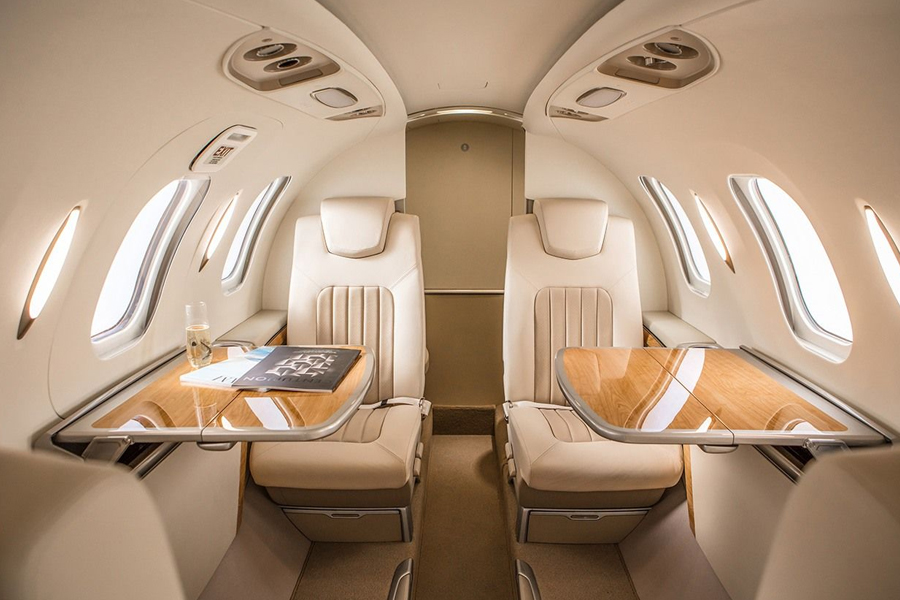HondaJet HA-420 - Description
The announcement of Honda’s first foray into the aviation industry in 2006 caused much excitement in the private jet industry. Honda’s already well-established reputation for excellence has set high expectations for their first private jet, and although the HondaJet is not expected to receive its type rating until 2010, the preliminary data is very promising.
Probably the most innovative portion of the HondaJet is its exterior design. Honda used a patented manufacturing processes to complete the aircraft’s all-composite, lightweight fuselage. Many key portions of the design are unique to the HondaJet and will significantly reduce drag: the natural laminar flow wings, tapered nose, and the over-the-wing engine mounts. The overall effect is that of a smooth, streamlined exterior that delivers both high performance and great runway appeal.
One area of the HondaJet that company executives have been quick to emphasize is its cabin. The design of the HondaJet, in particular the pylon-mounted engines, frees up a lot of space in the cabin where it is traditionally limited by the engine mounts. An added benefit of the engine positioning is that noise levels within the cabin should be significantly lower since the engines will not be mounted directly on the fuselage. The HondaJet’s cabin will be able to seat two pilots plus five or six passengers. The air taxi design will seat six passengers in a forward-facing configuration. The five-passenger option will include a single club configuration with a forward seat and a fully enclosed aft lavatory. A total of 66 cubic feet of baggage space will be available, 57 cubic feet of in an aft compartment, and 9 cubic feet in the nose. The cabin itself will be 4.9 feet high, 5.0 feet wide, and 17.8 feet long.
HondaJet partnered with GE to design a completely new turbofan engine to power the HondaJet: the HF120. This engine will be able to produce 1,670 pounds of thrust on takeoff and will have the lowest specific fuel consumption of any comparable engine. The HF120 engines will give the HondaJet enough power to take off in 3,120 at sea level on a standard (15° C) day. Honda has made it a top goal for the aircraft to be able to fly at speeds up to 420 ktas, the fastest of any private jet in the light jet category. The HondaJet has a fuel capacity of 2,300 pounds of fuel and is expected to have an IFR range of 1,180 nautical miles (with a 100 nm alternate) while carrying three passengers and one pilot.
Honda selected Garmin to provide the avionics for the aircraft. Although exact details of the flight deck have not been announced, it is known that the fully integrated system will be all-glass. Two flat-screen LCDs will provide the pilots with an intuitive, easily accessible interface to control and monitor all of the HondaJet’s major systems. Honda has announced that the cockpit will feature some of Garmin’s newest technology, including some components not available in any other private jet.
The HondaJet is already well into the design and certification process, just as the accompanying customer support network across the US takes shape. Sales, maintenance, and product support centers are being implemented across the country, including a HondaJet production center with a projected output of 70 aircraft per year. Honda has announced that sales have been better than expected since they started taking orders at the 2007 NBAA convention for the $3.65 million light private jet and is optimistic that they will continue to be strong. If the HondaJet continues in this strong pace, it will more than match the public’s high expectations.








